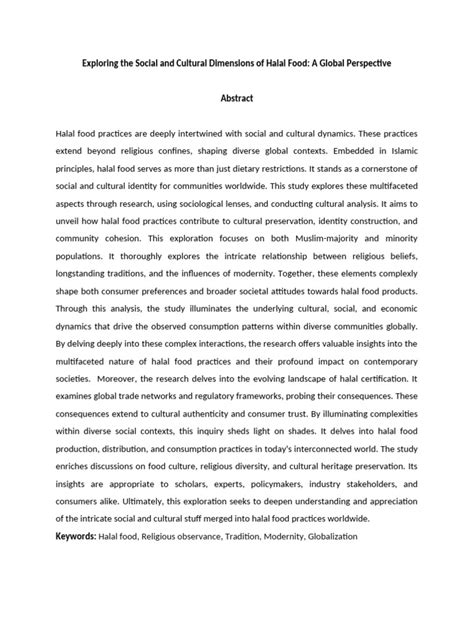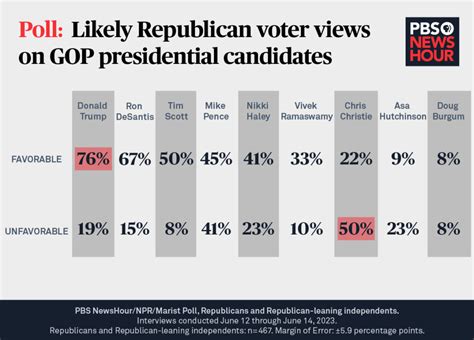Explore the globalization of baseball, its origins, key drivers, cultural exchanges, challenges, and future trends, including the impact of international players on MLB.Baseball, often referred to as America’s pastime, has transcended borders to become a beloved sport worldwide. In recent years, the globalization of baseball has taken center stage, revealing a rich tapestry of cultural interactions and influences that extend far beyond the diamond. This article delves into the fascinating journey of baseball’s expansion, examining its origins and the key factors propelling its international reach. We will explore how international players have transformed Major League Baseball, fostering cultural exchanges and invigorating fan communities around the globe. Additionally, we will address the challenges that accompany this globalization and look ahead to future trends reshaping the sport. Join us as we uncover the cultural perspective behind the global phenomenon that is baseball.
The Origins of Baseball’s Global Reach
The globalization of baseball can be traced back to its humble beginnings in the 19th century, when the sport began to evolve from regional leisure activity into a worldwide phenomenon. Its roots are deeply embedded in American culture, but the journey to becoming a global sport involves a fascinating interplay of historical events, migrations, and cultural exchanges.
In the late 1800s, as the United States experienced a surge of immigration, baseball became a unifying force among diverse communities. Immigrants from Europe, Latin America, and Asia adopted the game, integrating it into their local cultures and traditions. This led to the establishment of numerous amateur and professional leagues that fueled competitive spirit and public interest, thereby laying the groundwork for a broader acceptance of the sport across different countries.
The introduction of baseball in various regions around the globe began primarily through American influence, especially during the era of American imperialism and military interventions, where American soldiers and sailors took the game to the Philippines, Japan, and Cuba. By the early 20th century, professional leagues had sprung up in these countries, and players from these leagues began to gain recognition, further contributing to the globalization of baseball.
Additionally, the advent of technology and media played a crucial role in promoting baseball. The invention of the radio and television facilitated the broadcasting of games across borders, attracting international audiences and inspiring new generations of international players to pursue careers in the sport. Major League Baseball (MLB) began to recognize the potential of a global audience and made concerted efforts to expand its reach through international games and partnerships.
As baseball’s popularity continued to escalate, the emergence of international competitions, such as the World Baseball Classic, showcased talent from around the globe and strengthened international ties. This further reinforced the position of baseball as a beloved pastime not only in the United States but also in many countries worldwide.
Today, the globalization of baseball is more pronounced than ever, with an increasing number of international players making their mark in the MLB, enriching the sport with their unique skills and experiences. This flourishing phenomenon has cultivated a diverse and dynamic baseball culture that continues to evolve, bridging gaps across different nations and fostering a sense of global community. The origins of this remarkable journey highlight not just the love for the game but also the transformative power of sports in transcending cultural barriers.
Key Factors Driving the Globalization of Baseball
The globalization of baseball is influenced by several key factors that have contributed to its growth and expansion as a popular sport across various countries. Understanding these factors can provide insights into how baseball has evolved into a global phenomenon.
- Media Exposure: The proliferation of digital media has allowed baseball games to reach audiences worldwide. Social media platforms, streaming services, and sports networks broadcast games internationally, fostering a greater fan base.
- International Tournaments: Events such as the World Baseball Classic and MLB’s efforts to host preseason games abroad have increased visibility and participation in baseball by international players and fans.
- Player Movement: The influx of international talent into Major League Baseball (MLB) has been a significant driver of the globalization of baseball. As players from various countries join MLB teams, they bring their unique styles and cultural backgrounds, enhancing the sport’s global appeal.
- Development Programs: MLB and other organizations have implemented development programs in countries like Japan, the Dominican Republic, and South Korea. These initiatives create pathways for aspiring players and promote the sport at grassroots levels.
- Corporate Investment: Sponsorships and partnerships with international brands help promote baseball as a global sport, providing financial support and marketing strategies to reach broader audiences.
- Cultural Exchanges: The cross-cultural exchange of languages, traditions, and baseball practices among players and fans contributes to the sport’s globalization, making it more relatable and enjoyable to diverse groups.
As these factors continue to play a role in the globalization of baseball, the sport is likely to witness further growth, connecting more people through the love of the game.
Impact of International Players on Major League Baseball
The globalization of baseball has significantly transformed Major League Baseball (MLB) by injecting a diverse range of talents from various countries. International players have not only elevated the level of competition but also enriched the cultural fabric of the sport.
One key impact of these players is their contribution to the overall skill set in the league. Nations like the Dominican Republic, Venezuela, Japan, and South Korea have produced exceptional athletes who bring unique playing styles and techniques. This infusion of talent has raised the bar for American players, leading to a more competitive environment where every player continually strives to improve.
Another crucial aspect is the cultural exchange facilitated by international players. As these athletes transition from their home countries to MLB, they introduce their unique backgrounds, traditions, and fan engagement practices, which impacts how the game is perceived and celebrated. This dynamic fosters a more inclusive environment and broadens the game’s appeal, attracting a global fanbase that resonates with their favorite players.
Moreover, the success of international players in MLB has inspired a new generation of young athletes around the world. Aspiring players now see opportunities for success in becoming part of the globalization of baseball, motivating them to hone their skills and pursue their dreams of playing in the majors. The visibility and success of these players also encourage investment in baseball development programs in various countries, ensuring a continuous flow of talent into the league.
Ultimately, the impact of international players on Major League Baseball is profound, contributing not only to the competitive nature of the sport but also enhancing its cultural richness, awareness, and growth on a worldwide scale. The globalization of baseball continues to shape the future of the game, making it a true representation of its diverse fanbase.
Cultural Exchanges in the Globalization of Baseball
The globalization of baseball has fostered significant cultural exchanges that enrich the sport in various ways. As baseball transcends borders, it becomes a medium for the sharing of traditions, styles, and perspectives from different cultures. These exchanges are evident in several key areas:
| Cultural Element | Description | Examples |
|---|---|---|
| Playing Styles | Different countries have their unique approaches to playing baseball, influenced by local traditions and athletic cultures. | Defensive strategies from Japan, aggressive base-running from Latin America. |
| Fan Engagement | Cultural differences shape how fans interact with the game, creating unique atmospheres in stadiums across the globe. | Crowd chants, traditional music, and local food offerings during games. |
| Media Representation | The portrayal of baseball in various media reflects cultural narratives and values, enhancing the sport’s global appeal. | Documentaries highlighting players from diverse backgrounds, cultural icons in advertising. |
| Influence of Legends | The impact of legendary players extends beyond their home countries, inspiring future generations of players worldwide. | Influence of players like Jackie Robinson, Ichiro Suzuki, and Sammy Sosa on young athletes globally. |
Through these cultural exchanges, the globalization of baseball not only expands the sport’s reach but also enriches its narrative, allowing for a richer tapestry of stories that resonate with fans across different backgrounds.
Challenges Faced in the Globalization of Baseball
The globalization of baseball comes with a unique set of challenges that must be navigated to ensure the sport’s growth and sustainability on an international scale. Here are some of the key obstacles:
1. Cultural Differences: Different regions have diverse perceptions of baseball, influenced by culture, tradition, and local sports preferences. Adapting the game to resonate with various cultural expectations can be challenging, as it may affect the traditional aspects of the sport.
2. Economic Disparities: Economic conditions in different countries can impact the accessibility of baseball. In many regions, financial resources for developing leagues and nurturing talent are limited, hindering growth initiatives that are essential for the globalization of baseball.
3. Infrastructure Development: Adequate facilities and training programs are essential for fostering talent. In some countries, a lack of proper infrastructure can stunt the growth of the sport and reduce the quality of player development.
4. Competition from Other Sports: In several markets, baseball faces intense competition from other popular sports, such as soccer or basketball. This rivalry can affect fan engagement and hinder the establishment of baseball as a primary sport in those regions.
5. Regulatory and Logistical Issues: Navigating international regulations and logistical challenges, such as visa requirements for players and teams, can complicate the establishment of cross-border leagues and tournaments. These bureaucratic hurdles often slow down the pace of globalization.
6. Language Barriers: Communication is critical in any sport, and language differences may lead to misunderstandings and complications, particularly among international teams and players. This factor can make it difficult for players to integrate and fully appreciate the culture surrounding the sport in different countries.
7. Media Representation: The portrayal of baseball in global media can either enhance or diminish its appeal. Negative or insufficient coverage can lead to reduced interest in the sport, affecting efforts to promote its globalization.
Collectively, these challenges highlight the complexities involved in the globalization of baseball. Addressing these issues effectively is vital for promoting the sport globally and ensuring its vibrant presence across various cultures.
Future Trends in the Globalization of Baseball
The globalization of baseball is an ever-evolving phenomenon, and several trends are emerging that could shape the future landscape of the sport. As technology, communication, and cultural exchanges continue to expand, we can anticipate important shifts in various areas:
1. Increased Global Competitions: With the rise of international tournaments like the World Baseball Classic, there is a growing interest in establishing more frequent and competitive global events. This could lead to a more integrated international baseball calendar, drawing attention to emerging baseball markets.
2. Technological Advancements: The use of technology in scouting, analytics, and player development is likely to become more sophisticated. Teams may leverage global data analytics to identify talent in lesser-known markets, emphasizing the importance of localized training programs that resonate with diverse cultures.
3. Emergence of New Markets: Countries in Europe, Asia, and Latin America are expanding their baseball presence. As interest builds, Major League Baseball (MLB) may invest more in grassroots programs, partnerships, and youth academies to cultivate talent and fandom in these regions.
4. Diverse Fan Engagement: Social media platforms and streaming services are vital to connecting with global audiences. The next phase could involve tailored content that resonates culturally with diverse fan bases, encouraging a multicultural appreciation of baseball.
5. Impact of International Players: As leagues become increasingly populated by talented players from various countries, their cultures and playing styles will influence the game. This integration will enrich the sport, making it more dynamic and appealing to a broader audience.
| Trend | Description |
|---|---|
| Increased Global Competitions | More international tournaments to foster competitiveness and showcase talent. |
| Technological Advancements | Enhanced scouting and analytics to identify talent in emerging markets. |
| Emergence of New Markets | Investment in youth programs to nurture baseball interest in diverse regions. |
| Diverse Fan Engagement | Culturally relevant content through social media to connect with global fans. |
| Impact of International Players | Cultural and stylistic influences from a diverse player base enriching the game. |
In conclusion, the globalization of baseball is set to grow, driven by international competitions, technological advancements, and a broader reach into new markets. This evolution will facilitate greater cultural exchanges and ensure that baseball continues to thrive and adapt in an increasingly interconnected world.
Frequently Asked Questions
What is the main theme of the blog post?
The main theme explores how baseball has transcended its American roots to become a global sport, reflecting cultural exchange and diversity.
How has baseball influenced cultures around the world?
Baseball has influenced various cultures by introducing new traditions, fostering local rivalries, and creating a sense of community among fans in different countries.
What role do international tournaments play in globalization?
International tournaments, such as the World Baseball Classic, showcase global talent and promote the sport across different nations, enhancing its international appeal.
How have baseball leagues outside the U.S. emerged?
Leagues in countries like Japan, South Korea, and several Latin American nations have gained prominence, offering competitive play and attracting international talent.
What impact does MLB have on global baseball?
Major League Baseball (MLB) has a significant influence on global baseball through scouting and signing international players, establishing partnerships, and promoting the sport worldwide.
In what ways has technology contributed to the globalization of baseball?
Technology has facilitated the globalization of baseball by enabling live broadcasts, digital platforms for fan engagement, and analytics that help teams and players worldwide improve performance.
Why is understanding the cultural perspective of baseball important?
Understanding the cultural perspective of baseball is important as it highlights how the sport serves as a medium for cultural expression, unity, and the celebration of diversity among nations.









